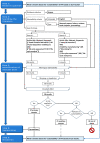Environmental Impact of Fused Filament Fabrication: What Is Known from Life Cycle Assessment?
- PMID: 39065302
- PMCID: PMC11281121
- DOI: 10.3390/polym16141986
Environmental Impact of Fused Filament Fabrication: What Is Known from Life Cycle Assessment?
Abstract
This systematic review interrogates the literature to understand what is known about the environmental sustainability of fused filament fabrication, FFF (also known as fused deposition modeling, FDM), based on life cycle assessment (LCA) results. Since substantial energy demand is systematically addressed as one of the main reasons for ecological damage in FFF, mitigation strategies are often based on reducing the printing time (for example, adopting thicker layers) or the embodied energy per part (e.g., by nesting, which means by printing multiple parts in the same job). A key parameter is the infill degree, which can be adjusted to the application requirements while saving printing time/energy and feedstock material. The adoption of electricity from renewable resources is also expected to boost the sustainability of distributed manufacturing through FFF. Meanwhile, bio-based and recycled materials are being investigated as less impactful alternatives to conventional fossil fuel-based thermoplastic filaments.
Keywords: FDM; FFF; MEX; additive manufacturing; environmental impact; fused deposition modeling; fused filament fabrication; life cycle assessment; material extrusion; sustainability.
Conflict of interest statement
The authors declare no conflicts of interest.
Figures









References
-
- Jiménez M., Romero L., Domínguez I.A., Espinosa M.d.M., Domínguez M. Additive Manufacturing Technologies: An Overview about 3D Printing Methods and Future Prospects. Complexity. 2019;2019:9656938. doi: 10.1155/2019/9656938. - DOI
-
- Ford S., Despeisse M. Additive Manufacturing and Sustainability: An Exploratory Study of the Advantages and Challenges. J. Clean. Prod. 2016;137:1573–1587. doi: 10.1016/j.jclepro.2016.04.150. - DOI
-
- Kunovjanek M., Reiner G. How Will the Diffusion of Additive Manufacturing Impact the Raw Material Supply Chain Process? Int. J. Prod. Res. 2020;58:1540–1554. doi: 10.1080/00207543.2019.1661537. - DOI
-
- Liu J., Gaynor A.T., Chen S., Kang Z., Suresh K., Takezawa A., Li L., Kato J., Tang J., Wang C.C.L., et al. Current and Future Trends in Topology Optimization for Additive Manufacturing. Struct. Multidiscip. Optim. 2018;57:2457–2483. doi: 10.1007/s00158-018-1994-3. - DOI
-
- Zhu J., Zhou H., Wang C., Zhou L., Yuan S., Zhang W. A Review of Topology Optimization for Additive Manufacturing: Status and Challenges. Chin. J. Aeronaut. 2021;34:91–110. doi: 10.1016/j.cja.2020.09.020. - DOI
Publication types
LinkOut - more resources
Full Text Sources
Research Materials

